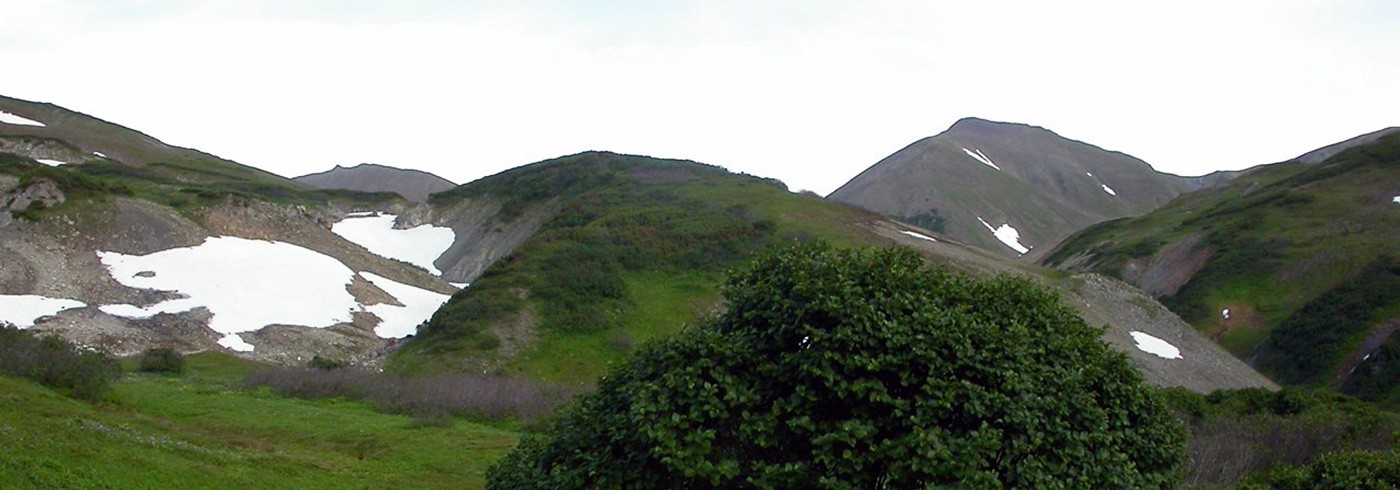Expedition summary: Beringia - ecology and evolution
11 July 2005 - 15 October 2005
A typical clearwater, shallow Arctic lake suffering from very high UV radiation. Photo: L-A. Hansson.
The Beringia region supports a remarkable biodiversity, with the largest concentration of breeding shorebirds in North America, large numbers of otherwise rare marine and terrestrial mammals, and one of the most productive fisheries remaining on Earth. The region also contains a plethora of Arctic plant species, which reflects a history featuring glacial refugia and recurring landbridges between Asia and America. The name Beringia was coined in 1937 by the Swedish botanist Eric Hultén, recognizing the importance of this area in the evolution and distribution of Arctic species. Nevertheless many aspects of the evolutionary ecology of Chukotka, Kamchatka and Alaska remain unexplored to this day.
The scientific theme presented here focuses on tundra ecology, evolution and biocomplexity as explored during the Beringia 2005 expedition. In July and August 2005 the icebreaker Oden visited research sites on both sides of the Bering Strait, from Provideniya in easternmost Russia, via Wrangel Island to Barrow in northern Alaska. Simultaneously another group of researchers visited a number of sites on the peninsula of Kamchatka, from Petropavlovsk to Karaginsky Island. A third group explored the region of Anadyr in Chukotka, while a fourth was stationed in the Yukon-Kuskokwim delta in Alaska. Thus we covered in a single season habitats from the Arctic shores at 73ºN down to the coastal tundra of southern Kamchatka at 53ºN. The entire region spanned 3 000 km from East to West and 2 000 km from North to South. This provided an excellent opportunity to compare interactions between productivity and biocomplexity in a range of tundra habitats. The tundra ecosystems were investigated from the different perspectives of population ecology, systems ecology, molecular ecology, evolution of species, animal behaviour, biodiversity, biogeography and animal migration. For many of the projects, new findings from this expedition extend and complete the data sets collected during previous Swedish expeditions in the Russian and Canadian Arctic, Tundra Ecology 1994 and Tundra Northwest 1999.
Several projects studied the interactions between plants and animals, such as the relation between plant diversity and mammalian herbivores, and interactions between plants and insects. One interesting result was that some insects which parasitize on tundra plants are themselves being parasitized by other insects to the extent that up to 90% of their larvae are being killed. In Kamchatka, the brown bear is the most common large herbivore; in some areas there were visual signs of bear activity every 17 metres.
One study looked at the disturbance of plant communities and the importance of nitrogen fixation in the process of growth and recolonization of vegetation. Other aspects of species interactions ranged from niche overlap and coexistence of large predators to behavioural interactions between shorebird species. Lake plankton have to adapt to the extreme UV light conditions of the Arctic. It was found that Daphnia plankton not only turn red as a response to intense sunlight, but also quickly move away from UV light when not acclimatized to it.
Much remains to be explored regarding the intriguing mechanisms of navigation and energy budgets of birds, both in the Arctic and on their long-range migrations down to Australia and New Zealand. Observations and experiments on orientation behaviour were carried out in the Beringia region and across the entire Arctic Ocean, studying how birds use visual or magnetic cues for navigation. Radar and visual observations from the ship revealed that during the most intensive passage up to 11,000 birds per hour passed the ship, some at an astonishing 4 600 m above sea level. Migrating birds may also affect human societies, for example by spreading diseases such as influenza. This was the theme for a project on viral and microbial infections in birds, tying together human medicine and the behavioural ecology of birds.

